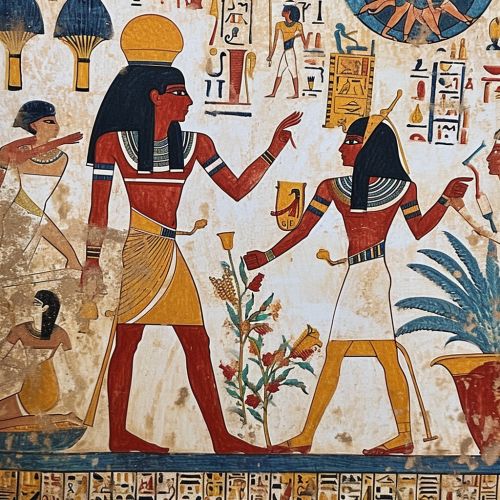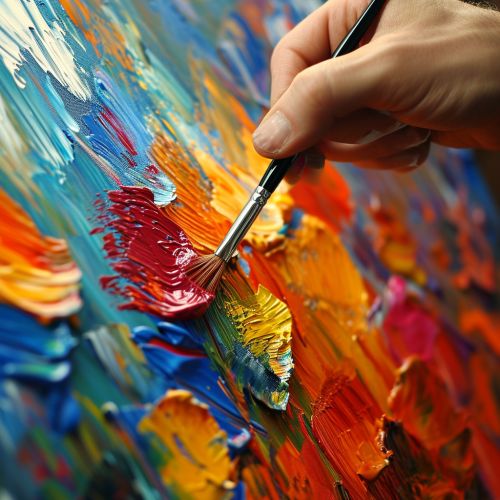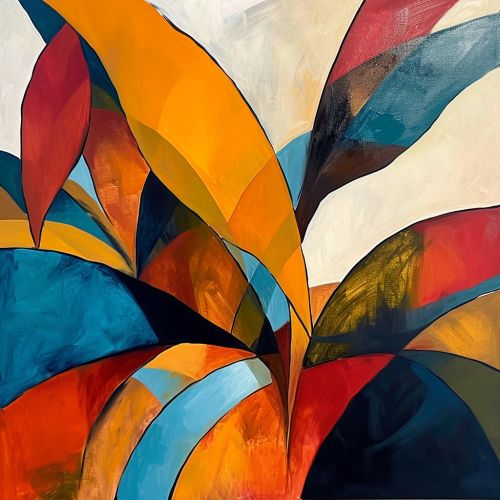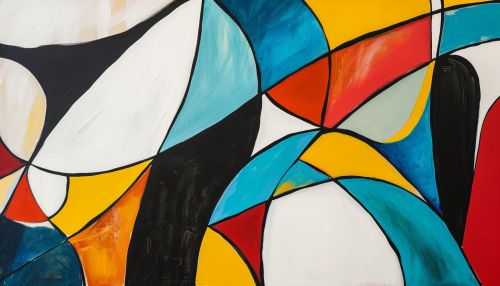Painting
Origins and History
Painting, as an art form, has a rich and diverse history that spans across cultures and millennia. The earliest known paintings are at the Chauvet Cave in France, believed to be about 32,000 years old. These paintings, made in charcoal and ochre, depict animals and human hands and are considered a form of prehistoric art.
The art of painting was further developed in Ancient Egypt, where it was used to decorate the walls of tombs and temples. The Egyptians used mineral pigments such as malachite for green and hematite for red. They also developed techniques for creating a flat perspective, which remained a characteristic of Egyptian art for 3000 years.


The Greeks and Romans continued to refine the art of painting, introducing more sophisticated techniques and materials such as encaustic paints and tempera. The Romans, in particular, are known for their realistic and detailed frescoes, which have been preserved in sites like Pompeii.
The Middle Ages saw the rise of Iconography, with religious themes dominating the art of the period. The Renaissance marked a significant turning point, with artists like Leonardo da Vinci and Michelangelo pushing the boundaries of painting with their use of perspective, anatomical accuracy, and emotional depth.
The following centuries saw a series of art movements, each with their unique styles and techniques. The Impressionist movement, for instance, was characterized by its emphasis on capturing the fleeting effects of light and color. The Cubist movement, on the other hand, challenged conventional forms of representation by presenting multiple viewpoints simultaneously.
Techniques and Materials
Painting techniques vary greatly depending on the artist's style and the period in which they are working. Some of the most common techniques include oil painting, watercolor, acrylic, Pastel, and encaustic.
Oil painting, developed in Europe in the 15th century, involves using oil-based paints on a canvas. The slow-drying properties of oil paints allow for greater flexibility and a wide range of effects. Artists can build up layers of paint, known as glazes, to create depth and luminosity.
Watercolor painting, on the other hand, involves applying thin, transparent layers of paint to paper. The water in the paint allows for smooth blending and soft edges, making it ideal for capturing the subtle nuances of light and color.
Acrylic paints are a relatively modern medium, having been developed in the mid-20th century. They are water-soluble but become water-resistant when dry, allowing for a wide range of techniques from thin washes to thick impasto.
Pastel painting involves using sticks of pure powdered pigment, bound with a small amount of non-greasy binder. The resulting color is vibrant and intense, and the medium allows for both soft blending and sharp detail.
Encaustic painting, one of the oldest known techniques, involves using heated beeswax to which colored pigments are added. The liquid or paste is then applied to a surface, usually wood or canvas.


Styles and Movements
Over the centuries, painting has evolved through various styles and movements, each reflecting the social, political, and cultural context of the time.
The Renaissance (14th-17th century) was a period of great cultural and artistic flourishing, with a renewed interest in classical learning and values. Painting during this period was characterized by its emphasis on perspective, light, and anatomy.
The Baroque period (17th-18th century) followed the Renaissance and was characterized by its dramatic use of light and shadow, often with religious themes. Artists like Caravaggio and Rembrandt are notable figures of this period.
The Romantic period (18th-19th century) saw a shift towards emotion and individualism, with a focus on the sublime, the irrational, and the imaginative. Landscape painting became particularly popular during this period, with artists like J.M.W. Turner and Caspar David Friedrich leading the way.
The Impressionist movement (19th century) marked a significant break from traditional painting. Impressionist artists sought to capture the fleeting effects of light and color, often painting en plein air (outdoors).
The Cubist movement (20th century), led by Pablo Picasso and Georges Braque, challenged conventional forms of representation by presenting multiple viewpoints simultaneously.
The Abstract Expressionist movement (mid-20th century) emphasized the expressive and emotional potential of abstract forms. Artists like Jackson Pollock and Mark Rothko are notable figures of this movement.
The Role of Painting in Society
Painting has played a significant role in human society throughout history. It has served as a means of communication, a form of expression, and a record of cultural and historical events.
In prehistoric times, cave paintings were likely used as a form of communication and storytelling. In ancient civilizations, painting was often used to decorate buildings and to depict religious and mythological scenes.
In the Middle Ages, painting served a primarily religious function, with artists creating icons and frescoes for churches and monasteries. During the Renaissance, painting became a means of exploring and expressing humanist ideals.
In the modern era, painting has been used to challenge conventions, question societal norms, and explore the human condition. It has also become a form of personal expression, with artists using it as a means to explore their own thoughts, feelings, and experiences.


